#hotblood horses
Explore tagged Tumblr posts
Photo
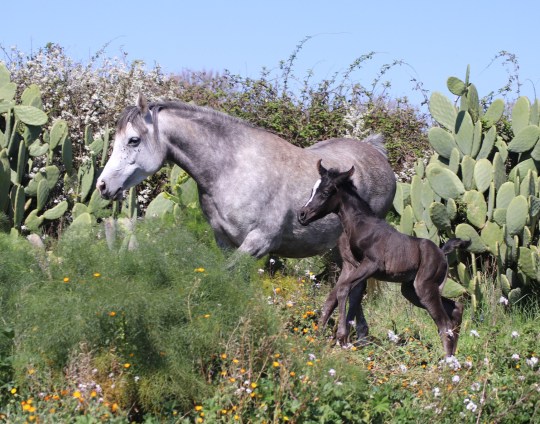


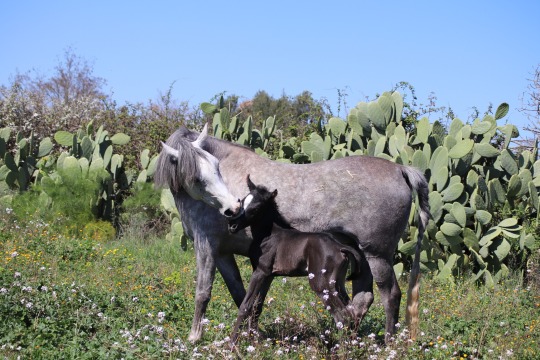
Babson Arabian Vlacq Amurrah and her filly Halypa Azeema
#arabians#babson arabians#straight egyptian arabians#hotblood horses#foal#horses#equines#asil arabians
10K notes
·
View notes
Text

Horse breed of the day: Croatian Coldblood
Height: 14-15 hh
Common coat colors: Seal brown and bay
Place of origin: Croatia
#croatian coldblood horse#horseblr#'coldblood' refers to the horses temperment#a coldblooded horse is a chill laid back and lazy horse#a hotblooded is high strung energetic and can be interpreted as 'acting out'#a warmblood is a horse with an in between attitude
231 notes
·
View notes
Text
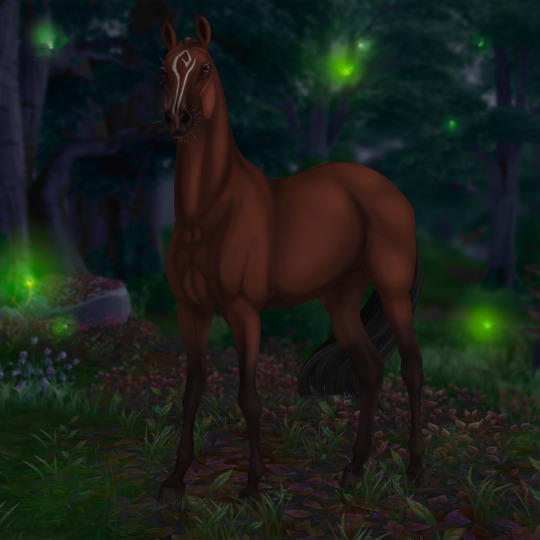
Traveller
#digital art#star stable online#sso#procreate#fantasy art#fantasy concept#forest#explore jorvik#black hallow stud#jorvik#hotblood horse#marwari horse#bay horse#BH Blood Moon#fireflies#sso drawing
11 notes
·
View notes
Text
Invierno en Kaliningrad
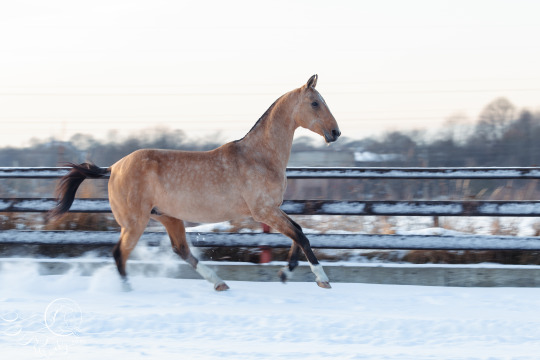
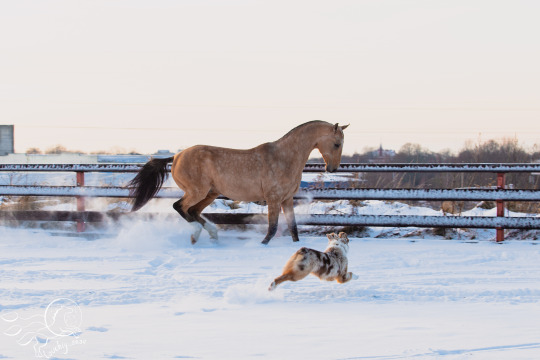

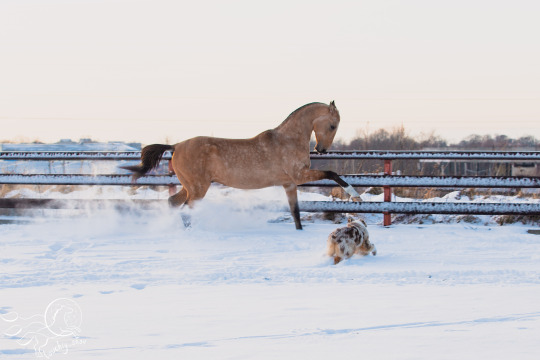
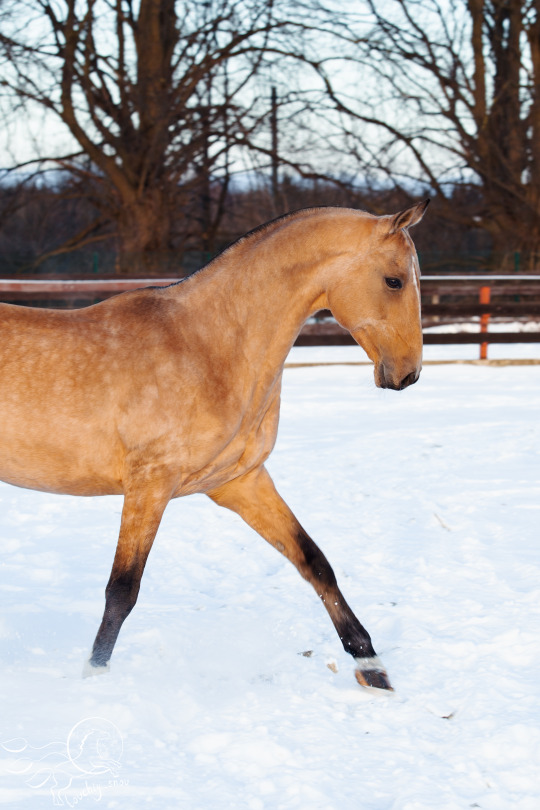
Mi dragón dorado Persianin Geli y corto invierno en la costa del Mar Báltico.
6 notes
·
View notes
Text
Well well well...
Guess who took off on my sorry ass.
And the quest with Hugh is broken for me btw (everytime I try to complete it all my movement controls seize up lol)
#horses#horse games#sso#yes i play sso now lol#sso hugh#arabian#osprey#asshorf#asshole horf#i got my ass handed to me by a fuckin hotblood#sso rrp#rrp
0 notes
Text


# BIG COMICS NEWS
HOTBLOOD, ZARCO, and ODESSA AND THE LEOPARD are slated for publication by Mad Cave Studios starting in 2024 2025.
Thank you and thank you again to my agent and everyone at Mad Cave for bringing this home. Ten years ago I started posting HB on tumblr and it means the world to be where we are now 🤠 I'm so grateful for another opportunity to share this story with you !
bsky | ig | devlog
More than ever, that man is gonna fuck the horse
1K notes
·
View notes
Text
Writing Research Notes: Horses
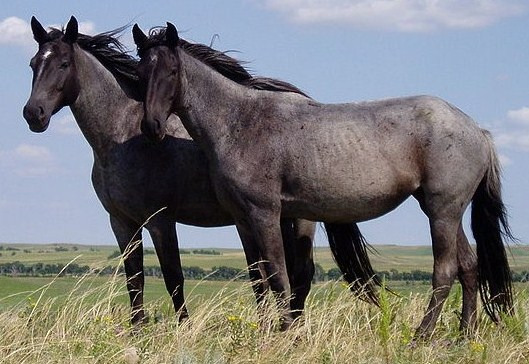
I have complained before about fantasy writers (and others) using horses without really knowing anything about them, so I'd like to share some basic Horse Facts. These aren't things about horse physiology, because you probably don't need that for your specific story, but things that you can add into your story for verisimilitude.
I'm not a horse trainer or Horse Expert, just someone who loves horses and rides on a regular basis. This is a casual guide to help give you some inspiration (and know what to look up for more information.)
So, what will we discuss in this embarrassingly long post? This.
General horse knowledge
Approaching and sanitizing Horse
Tack, the Horse Accessory Kit
Putting the tack on Horse
Getting on Horse (second best part!)
Riding Horse (best part!)
Being nice to Horse (most important!!)
General Horse Knowledge
Horses are generally classified as hotblood, warmblood or coldblood.
Of course, being mammals, they are all actually warm-blooded. This is more about temperament and size.
Hotblooded horses are lighter, bred for speed and maneuverability. Thoroughbreds and Arabian horses are hotbloods. They're known for being a bit more temperamental, but they are also very fast and responsive.
Coldblood horses are larger, stockier, and more even-tempered. This includes draft horses like Percherons, Gypsy Vanners, and Clydesdales.
Note that a big horse doesn't necessarily mean they're a good war horse, because war horses need to be fast and light. Draft horses are meant to pull, not carry. In a military series, you can use them as cannon horses or cart horses.
Warmblood are crossbreeds of hotblood and coldblood, giving them a good temperament but also relatively good speed. They're often used for hunting, dressage, and showjumping: disciplines that require both maneuverability and a strong working relationship between horse and rider. Quarter Horses, Tennessee Walking Horses, and Irish Sport Horses are warmbloods.
Horses are herd animals and need friends.
Having a singular horse all by themselves is going to cause them distress and lead to mental problems. This is why people who only own one horse often stable them so that they can get social stimulation and professional care.
Like humans, horses have buddies, acquaintances, and enemies.
There is often a pecking order in a herd, with a leader and followers. Horses may make friends, break up with them, reconcile, etc, just like people do.
And horses, of course, have people they like more than others. To get a horse to like you, be gentle and mindful of their boundaries, pay attention to their feelings, groom them, and speak in a soft friendly voice.
Horses aren't mindless animals: they think, feel, and strategize.
They're actually very sensitive and empathetic animals who can get jealous, have their feelings hurt, or need a little bit of TLC on a hard day. And yes, they can scheme.
Similar to dogs, horses are a bit like toddlers: they need firm but compassionate guidance.
This is why you need to think both for yourself and the horse when riding, keeping your mind clear and focused on your goals. Horses can notice when you're not paying attention and they will do their own thing.
Therapy horses are chosen for both their good nature and their sensitivity to human emotions. They will notice when the rider is getting upset or losing focus, and they will stop what they are doing until the rider is back in the right mindset.
They should get as much outside time as possible.
Horses will come to accept and even like their stalls because it's a safe, quiet space for them, but they should be allowed free time outside as much as possible.
It's important to make sure that their pasture is clean, free of dangerous plants or pesticides, and safe from tripping hazards (horse legs are very delicate).
Make sure they are not gorging themselves on grass, though, as this can cause colic. Horses cannot throw up: they've got a one-way digestive system. Intestinal blockages are a medical emergency.
Horses do like working with nice humans.
This isn't cope, I promise. Just like dogs, they have been bred over thousands of years to look to humans for guidance and to see us as caretakers.
Horses who are treated well like having a job, just like dogs who are treated well will like training sessions. Jobs offer them mental stimulation, offer them praise and rewards, and keep them busy so they're not bored.
You can see this in happy horses. The therapy horse I use, Truly, used to be a jumper and hunter before she came to the therapeutic stable, and she gets really excited if she sees vaults because she loves doing that! She gears up for the trot; you can feel it in her stride. She's ready and wants to go.
But, this implies that you're treating your horses well, praising them regularly, and bonding with them outside of sessions.
Horses that are being mistreated will balk at work because they associate it with pain and fear. Horses that are treated well will happily come out of their stall, ears forward and eyes bright, because they associate work with fun and stimulation.
Approaching and Sanitizing Horse
Horses have a blind spot in front of them and directly behind them.
Unlike humans, their eyes are on the sides of their head because they are prey animals. This means approaching a horse directly from the front or directly behind them may make them spook - and, if you are by their butt, kick you.
Generally, younger riders are taught never to pass behind a horse for safety reasons, so you go around them in a wide circle or duck under their neck. You can also walk behind them if you are out of kicking distance (about 3-4 feet) or right up against them so they can't get their leg up to kick you.
When tacking up or grooming, you should keep a hand on the horse as you move.
This lets the horse know where you are if you are in their blind spot and is especially important if you are around their butt so they don't spook and wonder where you went.
With grooming, you go with the curry comb and hold the bristle brush where you intend to go next so they know what to expect.
Grooming improves circulation and is a good bonding activity.
You use a curry comb, which is a rubber comb with little nubs, and then a brush. The curry comb is moved around in a circular motion to lift dirt and shedding hair, then the brush is angled with the grain of the hair to sweep it away.
Don't use a curry comb on a horse's face, legs, or stomach, which are sensitive areas. If you do want to use a curry comb in these areas because they are super dirty, be VERY gentle and light.
Horses generally like to be groomed because they do this to each other in the wild. It's a good way to make a horse like you.
Picking a horse's hooves, and having regular farrier checks, are crucial for their health.
Like human fingernails, horse hooves grow continuously; they're made from the same material as our hair and nails, keratin. They have a V-shaped "frog" in the middle of the underside of their hoof that is sensitive, but the rest of it isn't very sensitive unless you, like, stab it.
Farriers will file down a horse's feet so they are even, and they will also apply horseshoes if necessary (not all horses wear shoes). You can't just put any old horseshoe on a horse: it has to be fitted to their particular foot. This is a specialized job that not everyone can do, so if your character is not a farrier, they're not going to apply horseshoes themselves.
Cleaning a horse's hoof involves a hoof pick.
When picking a horse's hooves, you take an angled piece of metal called a hoof pick and dig out any dirt or manure or whatever has gotten stuck around the frog, then brush it out with a small brush. If they wear horseshoes, you also need to make sure you get the crevices underneath the shoe.
Generally, we pick feet both before and after riding.
Horses need to be trained to give you their leg. This usually means leaning your body weight into their shoulder, sliding your hand down their leg, and squeezing at the soft indent right above the hoof. You might also need to say "pick it up" or whatever command they've been taught to use.
It's a little scary for a horse to be off-balance like that; how would you feel if someone made you stand on one leg while they clipped your toenails? Be mindful that they may get nervous or put their foot down before you're ready. If this happens, just try again until their feet are clean.
Keep your feet and hands out of the way of the horse's hoof!
Pay attention to where your feet are in conjunction with the horse's hoof so they don't slam their hoof down on your toes. Horses may not even realize they stepped on you because they don't have a lot of sensitivity down there.
Never curl your fingers around the horse's hoof; that's a surefire way to break your hand. Hold it like you're cradling a baby's head.
Do not wear steel-toed shoes in a stable.
It's a common misconception that you should wear work boots or steel-toed shoes; after all, big horse very strong very heavy smash on foot!
Yeah, but a furry hydraulic press will crunch that steel right into your damn foot, and then you have guillotined all your toes.
Wear special riding boots instead. These don't have the ridges that hiking shoes or tennis shoes have, so they won't get caught on the stirrup. Cheap short ones cost like $40 and will last you a few good years. No need to go whole-hog on the long dressage boots if you're a casual rider.
Horses are usually taught to be groomed, tacked up, and mounted from one side.
This may not apply to therapy horses, who are trained to accept whatever way is easiest for the rider.
For dressage horses, they are taught to be groomed, tacked up, and mounted from the left. You should stand on the horse's left side when leading them. You'll dismount from the right.
Tack: The Stuff That Goes on Horse
No matter your discipline, you'll have these general things:
Halter. This is for leading the horse around before you tack them up. Generally, you will tie up the horse to cross-ties while you're grooming and tacking them. It is removed right before you put on the bridle.
Saddle blanket/pad. Western uses saddle blankets, but with English, you'll use a pad. Sometimes, with older horses or those that need a bit more comfort, you will have a blanket and a pad. This goes on before the saddle.
Saddle. Western saddles are very big, made for riding long distances. They are made mostly of leather, including the stirrups, which are attached directly to the saddle. English saddles are much smaller and lighter, and they have more removable parts. I won't get into all the specifics of them because it's probably irrelevant to your story.
There are also more specialized saddles, like jockey saddles.
Girth. Old-school Western saddles have cinches that you tie with the same knot you use for a necktie, but modern ones that detachable girths just like English saddles. They have buckles on both sides. One side will have leather straps; this is the one you put on first, from the left. The other side has elastic so it's a bit stretchier. This goes on the right side.
Bridle. How you control horse. Goes over the face and you hold onto the reins. This is put on last, right after you remove the halter. Put the reins over the horse's neck so you have something to hold onto after you remove the halter!
Bit. This is a metal bar that goes in the horse's mouth, over the tongue. Snaffle bits are the most common; they are made of two parts that meet in the middle. They aren't as uncomfortable for horses as other types. Some people are moving away from bits entirely and using bitless bridles.
Putting Tack on Horse
English stirrups are "run up" when tacking up and leading a horse.
The metal stirrups can bang against things and hurt the horse if they are not pulled up against the saddle by running them up the leather strap they hung from. You'll then tuck the excess strap into the stirrup to hold them in place.
Stirrups can be adjusted with a buckle hidden under the saddle seat. You'll run them up, pull the buckle down to a comfortable height, and then adjust as necessary. Then pull the stirrup down to the bottom, put your hand against the seat, and lift the stirrup up to run along your arm. It should brush against your armpit for most people.
Most dressage stirrups have numbered holes so you can remember what your height is.
Western saddles have leather stirrups that may or may not be detachable or adjustable.
Never tie a horse's reins to anything.
Don't listen to old Western movies that show this. If the horse spooks and they are tied up, they could rip the bit out of their mouth and really hurt themselves.
Horses have bars in their mouth - a blank space with no teeth. This is where the bit sits.
To get a horse to accept a bit, you can stick your thumb into this blank spot to make them open their mouth, just as you can do with dogs.
You then pull the bit up over their front teeth and settle it in there so it's comfortable.
There should be a small bit of pull you can see from the wrinkles around their mouth, but it shouldn't be squeezing them to death. Gentle pressure, happy horse.
Tighten the girth (the strap around their tummy) right before you get on.
Horses like to "bloat," meaning they suck in a bunch of air when you're putting the girth on, then relax so that the girth is loose. You don't want this, because then you can slide off. So put it on loosely at first, then put it up a few slots once you're about to get on.
Don't rachet it up to the highest possible setting you can reach, and don't yank on it, because this hurts the horse. Gently pull it up until it's tight enough to hold on, but not so much that it becomes a corset. You should be able to slide three fingers between the girth and the horse's stomach.
Getting On Horse
Lead the horse to where you want to go by bringing the reins over their head and holding them under the chin.
Do not use a death grip! You don't need to. Loose and happy. Keep the excess in your other hand so it's not a tripping hazard.
Then, of course, put the reins back over their head when you're ready to get on.
Mounting blocks are convenient and safer for the horse.
These are kind of like step stools, and they get you closer to the horse's back. Mounting from the ground puts a lot of pressure on the horse's back and should only be used sparingly.
The procedure is like so for English:
Gather the reins in your left hand, which should be placed near the front of the saddle.
Put your right hand near the back of the saddle for balance.
Put your left foot in the stirrup.
Swing your right leg over.
Settle your right foot in the stirrup.
Don't jump up; you might fall the hell over, lmao. Gentle easy swing.
The stirrup sits on the ball of your feet, with the heel pointing down.
This is true for both Western and dressage. You want it on the balls of your feet so you have leverage and can pivot your ankle to lightly tap the horse on the side, and you want your heel down to help maintain your balance.
A lot of riding boots, including cowboy boots, will have stitching that runs across the top of the foot. You can align this with the stirrup so you know that you don't have your foot too far back in the stirrup.
Your leg is slightly bent when in the saddle.
You do not have your legs straight out, because then you don't have leverage and can't maintain balance.
My instructor says it should feel like you're kneeling, and then when you post (rise out of the saddle during the trot or canter), you should feel like you're coming out of a squat. You're not springing all the way out of the saddle and standing up, because then you will fall over.
Your leg should stay as still as possible, with your heels pointing down to the ground. You shouldn't move them up or forward when you're trotting, a common beginner mistake.
When training in a ring, you don't have a right leg and left leg: you have an "outside" leg and "inside" leg.
Outside leg is the one closest to the wall (or fence), and inside leg is the leg closest to the middle of the ring. This keeps you from getting confused when you change directions.
Horses also have an outside leg and inside leg that you use to determine when to post or perform other maneuvers.
Horses need to be trained to go both clockwise and counterclockwise.
This helps them maintain balanced muscle tone on both sides of the body; otherwise, it's like doing leg exercises with only one leg. When getting a lesson, your instructor will ask you to change directions once you've done a certain exercise so that you can try it the other way, too.
Actually Riding Horse
You shouldn't yank on the reins like you're in a tug-of-war.
This can really hurt the horse and, paradoxically, make them more disobedient. It's like someone put their fingers in your mouth and then stretched your lips as far back as possible.
Keep your body loose.
Your horse is listening to your body language and will feel when you're tense. Every little movement means something to the horse. If you're tight, they think they should be nervous too.
Stay calm, upright, and loose. Legs slightly bent, elbows flexible, hands in line with the sides of the horse's neck and a bit above the front of the saddle.
Squeezing or tapping the horse is called impulsion.
It should be used lightly and with just enough pressure to get their attention. Don't kick the horse with all your might. The more movement you need from the horse, the more intense your impulsion will be.
Don't squeeze with your knees.
Pressure on the horse comes from the thighs and calves, not the knees. Your knees are there to bend.
Yes, your inner thighs will be super duper sore when you're done. It gets better though, prommie.
In dressage, you post at the trot in rhythm with the horse.
This reduces pressure on their back so you're not banging on their spine with each hootbeat. You post when their outside shoulder comes forward and lightly land back in the saddle when their inside shoulder rises: not sitting all the way down, just crouching a bit lower.
When you want the horse to walk again, you will sit down and pull (gently!!) back on the reins. The added pressure makes them not want to trot anymore because it would hurt them when you bump around on their back.
Being Nice to Horse (so Horse Is Nice to You)
Respect a horse's personal space and power.
They are big strong animals that can break your spine if they buck you, or crush your foot, or give you brain damage if they kick you in the head. Healthy respect (not fear) is crucial.
If a horse is pissed off, leave them alone. If they're scared, treat them kindly and speak soothingly. If they're not doing what you want, find a way to redirect them instead of screaming at them and making them more anxious.
And remember that they are prey animals despite their size and power! They may get nervous about things that you wouldn't even consider. Truly, the horse I ride on the regular, gets freaked out by jackets hanging over fence posts and barking dogs.
That's okay and natural; I just have to reassure her that she's going to be alright. You are the leader and caretaker of the horse, making them feel confident.
Training tools like whips, crops, or spurs should be used sparingly.
Any trainer who tells a beginner to use spurs as soon as possible is an asshole who doesn't actually know how to train horses. They don't know how to teach riders to control their body pressure, so they go right to the aversives.
I left a stable because the trainer demanded I buy spurs after like two lessons; my current stable doesn't use these at all, ever.
You should be able to control the horse with your hands and feet without these tools before adding them, and they should always be used as gently as possible: a slight tap with the spurs or crop, not beating the horse with a crop or digging your spurs into their sides. Horses are very sensitive animals and will respond well to a light kick with your heels if they are properly trained.
I've developed such a good rapport with the therapy horse I use (and she's such a good girl) that she can tell when I want to her trot. I start working her up to her "party walk" as my instructor calls it, and then click my tongue, and she's off. No kicking necessary.
Reward, Don't Punish
Same as when training dogs. Don't yell at them and say "no!! bad horse!!" Instead, offer a small correction, like checking the reins, or redirect them.
Do not hit or kick horses when they don't do what you want. They are trained that tap means go; you're going to make them gallop instead of stop.
Give them a pat on the neck and say "good horse!" when they do a good job. You can also talk to the horse while you're grooming and riding, offering them compliments and assurance.
Again, horses look to riders as leaders. They want to know the're performing correctly; if you've built up a good relationship, they want to make you happy and perform well.
Most of the time, horses are not trying to make you mad. You're just miscommunicating with them and need to figure out how to make your commands clearer.
Abusive training tactics are counterintuitive in the long run.
This makes for a nervous, flighty, disobedient, and anxious horse who may become dangerous. They're 1,200 pound animals, and if they don't like what you're doing, they will kick, buck, or bite.
Kicking, hitting, excessive use of spurs or crops, and screaming at horses doesn't make your horse respect you: it makes them fear you. You want your horse to be excited to work with you, to look forward to your training sessions, and to have fun.
I've created a masterlist of writing resources that you can peruse at your leisure, all for free.
The posts I write can sometimes take me hours - they're always intricate, always thoughtful. This one took me about three hours to complete.
I do this as a labor of love for the writing community, sharing what I have learned from almost 15 years of creative writing.
However, if you'd like to support me, maybe you'll consider buying my book for $1.99?
9 Years Yearning is a gay coming-of-age romance set in a fantasy world. It follows Uileac Korviridi, a young soldier training at the War Academy. His primary motivations are honoring the memory of his late parents, protecting his little sister Cerie, and becoming a top-notch soldier.
However, there's a problem: Orrinir Relickim, a rough and tough fellow pupil who just can't seem to leave Uileac alone.
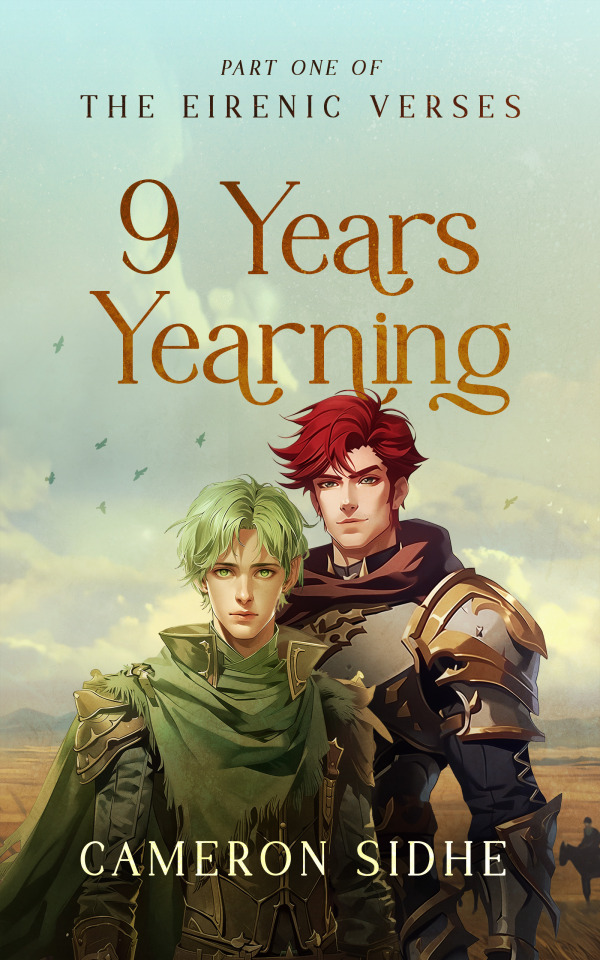
The book features poetry, descriptions of a beautiful country inspired by Mongolia, and a whole lot of tsundere vibes.
Oh, and horse!!! Horse love!! SO MUCH HORSE LOVE.
You can also check it out on Goodreads for a list of expanded distribution.
If you do purchase my book, don't forget to leave a review!
Reviews are vital for visibility on Amazon and help to support indie authors like me. Whenever you love a book, be sure to let the author know! It's much appreciated.
#horses#equestrian#fantasy writing#creative writing#how to write#writing research#writing resource#writing reference#writing advice#writing stuff#on writing#writing things#writers on writing#writing horses
125 notes
·
View notes
Note
First off, congratulations on your help with Lackadaisy!✨️✨️✨️
Second, I've been practicing with the Lackadaisy style using nothing but traditional art (paper and colored pencils), and I'm nervous about using digital art for the first time😓
I've been procrastinating with practicing digital art for years, and now I'm ready to get started!✨️✨️✨️
Got any helpful tips or advice for drawing Lackadaisy characters with digital art?🤔
Also, I have ADHD and I'm Autistic so trying new things takes time with me😅
Well the nice thing about ADHD and Autism is when you get into something, you get REALLY into something. So if you are able to build a routine that allows you the freedom to explore the medium you want to jump into, then you'll steamroll ahead. If you're finding it hard to kick off that fixation so you can focus easier, try to pair it up with an existing fixation. Are you into every kind of horse? Okay then, draw an example of every warmblood, coldblood, and hotblood you can think of. Every pony, every donkey, every mule. Find some good photos and go to town. Piggy-backing off my existing fixations is how I can chain together a lot of information that I would otherwise struggle to absorb and recall fully.
As for helpful tips, you're already doing it. I think starting with traditional materials is a good way to build up good art habits without the convenience of infinite colors and the undo button. You'll make quicker decisions and be a little less precious about mistakes. Cuz you have to live with them IRL, so might as well keep going even if the work didn't turn out great. Maybe you'll learn something along the way?
A second tip, more specific to Lackadaisy, is breaking characters down into simpler shapes and seeing if you can build them back up again. Feel free to trace them to turn them into mannequins. Then, knowing the proportions of those mannequins, can you draw them doing other things?
And research. Tracy deep-dives into historical stuff like clothing, hairdos, jobs, jewelry, etc. If you immerse yourself in something you find interesting, you'll see it cropping up in your work occasionally. Look into art deco and art nouveau, two schools of design thought that have a thread running between them that goes solidly through the 1920s. Consider how that design philosophy might get integrated into clothing or furniture.
Other than that, digital specific? There's isn't much, just have fun with what program feels good to use. Don't go too nuts on color (you have a million colors, but a million colors does not a good painting make) and make sure the ergonomics of your digital art situation doesn't hurt you longterm. Take breaks for your hands and stretch. It's more strenuous than traditional. Maybe it's the lack of physical feedback or the way we tend to curl around our devices. Not sure, but I find it more draining than trad work.
40 notes
·
View notes
Note
On the topic of the pony pictures you have for that ask about medieval horses that there are larger breeds of pony than just shetlands which are the ones that normally pop into people’s heads when you say ‘pony’.
Shorter horses makes sense for knights to ride because let me tell you it can be really hard mounting 15+ hand horses even as a person that’s 5’10 wearing normal riding gear depending on the breed it is.
Add in armor, weapons, any other sort of gear hooked onto the saddle and it’s really fucking difficult to mount up esp in a hurry. saddlebags are super annoying when both mounting and dismounting (foot can get tangled easily).
(to provide context of my knowledge I’ve been riding English style(hunter/jumper) since I was a kid and this past summer I worked as a horse wrangler which was Western style doing trail rides)
Horses are also sorted by Coldbloods/Warmbloods/Hotbloods which is super interesting and I definitely recommend looking it up!
Pony = Chihuahua
respect their boundaries or meet satan
It is totally believable to me that they were used for battle
(i’m so sorry if you actually are knowledgeable about horses/ponies i don’t mean to be condescending if you are)
thank you for this info!!! I know very little about horses but I like to pretend I'm an expert and mansplain horses whenever I talk to my spouse because they were an aspiring rodeo competitor, and I'll say things like "I don't think you've ever seen a horse before" and it drives them crazy
24 notes
·
View notes
Text
You have hear of centaur! Edda, not get ready for…
Centaur Aven!

I attempted to give him a dappled coat but it failed… still thinks he looks pretty cool though!
Also little trivia: Edda is based on a draft horse (Specifically a shire), while Aven is based on an Akhal-teke. This is because draft horses (Like the shire) were originally war horses, as well as the fact that they’re more common in colder climates. Hotbloods, like the akhal-teke, originated in hotter climates, like deserts, and were bred to have high endurance and speed! Thus, Edda and Aven are based on horses that are most similar to them combat-wise!
Also on a slightly related note, warmbloods are basically horses that are used for sport. They’re more often referred to as “Sport Horses” in newer literature.
Also @nonamestudiosbcn have this!
6 notes
·
View notes
Text

The King of bravest and bravest of the kings
Some time ago I came across a post (probably on Reddit) where the author asked what kind of horse from RDR2 players are going to make as soon as horses appear in The Sims 4. Just a black horse is kind of boring. But recently, RDO can't last even 5 minutes without crashing. So here's my boy Murat 🥰

Many players doubt Arabian's reliability. But he is always the first to take your back off the battlefield.


CC credits:
• Ornate Medieval Saddle Pad by @flowermilksims
• Striped Hooves by @walnuthillfarm
• Smaller Eyes + Eye Geom Fix by @objuct
• Default horse eye replacements by @bluubun
• Horse retexture by @minervamagicka
• Horse Shine Stencil No. 2 by @itskatart
• Saddle, lantern and snaffle are photoshoped god, I'd wish someone make Red Dead equipment for Sims.
• Arabian/hotblood focused poses by @camthecowboyman
#sims#the sims 4#sims 4#ts4#simblr#ts4 horse ranch#ts4 horses#sims 4 horses#red dead redemption 2#red dead 2#red dead online#rdr2#rdr2 horses#games stuff
51 notes
·
View notes
Text
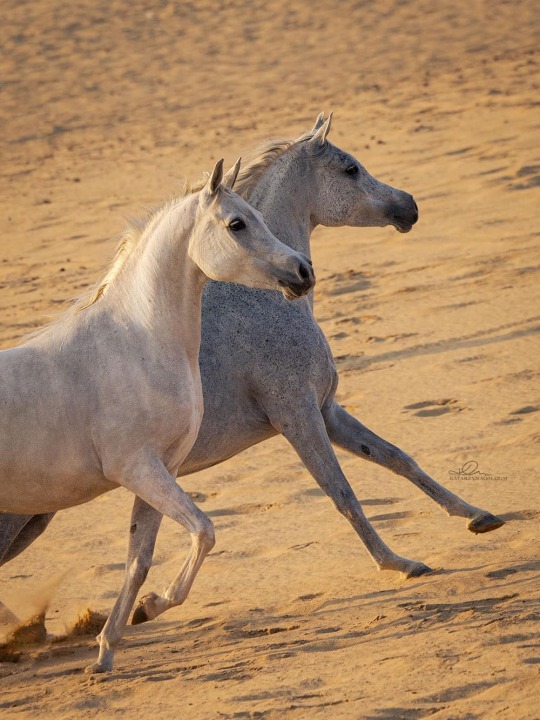
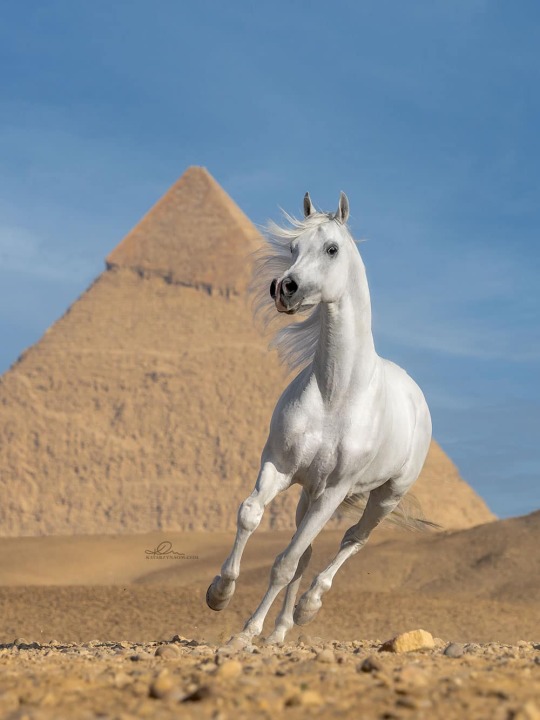


Arabians in Giza, Egypt
438 notes
·
View notes
Note
whats your take on satyrs and centaurs etc? do you have personal hcs on them like centaurs personalities depending on them being hotblooded or warmblooded? or social routines of satyrs gathering to braid and groom each other's fleece? they're not always a particular favorite, but it is fun to dive into lore abt them
(sorry for sitting on this for so long!)
I like to think that there are as many variations to centaurs and satyrs etc. as there are to their real life inspirations in horses, deer, goats etc.
You get tough, stubborn Shetland centaurs and big, chill Shires and Belgian drafts, good all-rounder, easy-going Dutch Warmblood types, and highly strung Anglo-Arab centaurs etc. etc. Same goes for cervitaurs - hardy red deer and delicate fallow, tiny muntjac, and small but tough reindeer, plus some really big moose folk too. Goat satyrs who have a tendency to faint if surprised, as well as some shy sheep-based satyrs who have close family units...
I have a headcanon for centaurs that it's a huge deal for someone to be allowed to sit on their back and ride them (let alone put tack of any kind on them), and for some it's taboo or just too revolting to consider, while for others it's a sign of deep honour and trust. I mentioned a story idea I had a while ago for an elite messenger corps that uses centaurs who are paired with a rider, but I never did anything with it (yet?).
I think satyrs would have very strong family units, and cervitaurs and centaurs are traditionally nomadic, though they tend to stick to one large area and roam across it. They're wary of outsiders, but if you gain their loyalty, they'll do anything to protect you. Satyrs love music, and throw the best and wildest parties and they're also good at brewing and distilling fruit wines and cider and ales etc., while centaurs are more known for their herbalist lore and skills in medicine, and cervitaurs are caretakers of the forest and are the best at woodland management and coppicing etc. :).
The quadruped species in particular are used to having family members and close friends take care of them - mutual grooming and hoof-picking and stuff is all very natural to them - so they're not generally body shy, but they're also very in tune with people's body language, and are able to read if you're not comfortable with a situation very easily.
I'm sure I've got more thoughts on them, but for now, I hope that was fun to read :). Thanks for your patience, anon.
64 notes
·
View notes
Text

Saffi
#star stable online#sso rp#sso#procreate#star stable roleplay#explore jorvik#black hallow stud#jorvik#star stable edit#digital art#sso edit#game edit#sso halloween#halloween art#spotted saddle horse#sport horse#hotblood horse#Morgan horse#warmblood horse#black horse#mare#pinto#overo horse#gaited horse#BH Bad Karma
30 notes
·
View notes
Note
i LOVE your centaur speculation i am HERE for your centaur speculation
thank you!!! i am vibing so hard here glad other people are too
so. idk if anyones noticed, but i dont reference specific horse breeds in my centaur designs. also, im not sure lydias localised little patch of dapples is something you actually see in horses. blanket appaloosas are similar, but not quite the same.
this is because, while horses and centaurs share a common ancestor, they became seperate species long before humans began selectively breeding horses. from what i understand from a brief google, its a case of divergent evolution between horses and taurs and convergent evolution with humans

like this? i think?
so, centaurs have ended up with the genes for patterns that horses may not have and vice versa, but centaurs do not come in the same strict breed categories that horses do. however, they tend to have a wider variety of body types than humans, and horse terminology has been adopted to describe them. they generally exist on a scale of hotbloods warmbloods and coldbloods, with coldbloods being stockier and having shorter legs, and hotbloods being more long-legged and having smaller hooves. their average height range is also quite large, with the tallest tending to be the colder blooded but that is not a hard rule. some general horse type names are often used to describe where a particular centaur falls within these ranges - small taurs being called ponies, larger coldbloods being drafts, smaller coldbloods cobs - but none of these are strictly defined categories and the boundaries are hazy.
to give an example:
in the centaur westen au, lydia is a warmblood (in the most literal way she could be, having a hotblood mother and coldblood father) and beetlejuice is a cob (small coldblood). lydia isnt quite full grown but shes more or less proportioned how she will be. she's a head shorter, but their legs are roughly the same length, because proportionately hers are longer due to her mothers genetics.
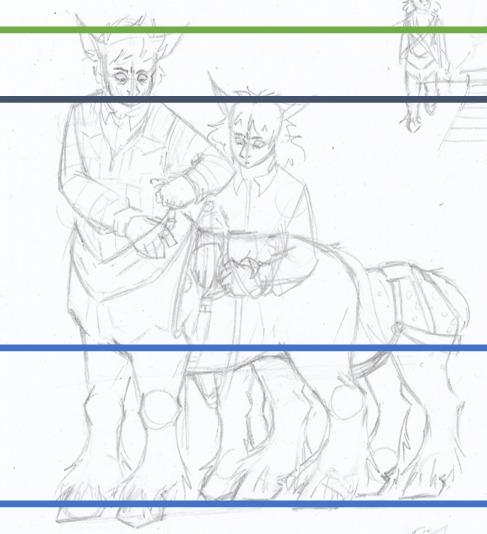
i know it doesnt perfectly line up in the drawing but that was my intention
bonus: charted the builds of everyone ive designed/have design plans for in the centaur western au

9 notes
·
View notes
Text
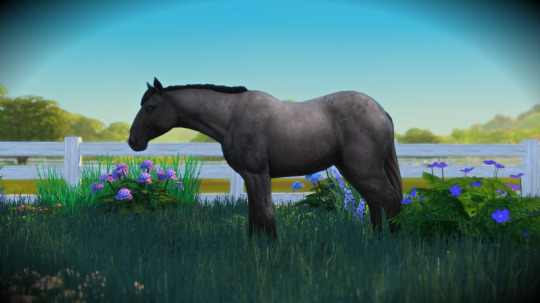
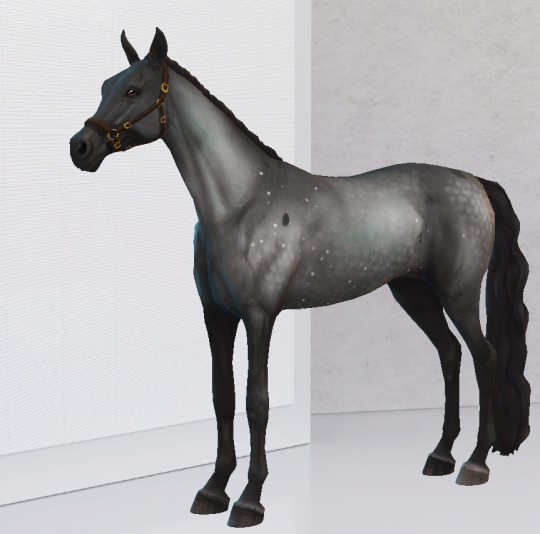
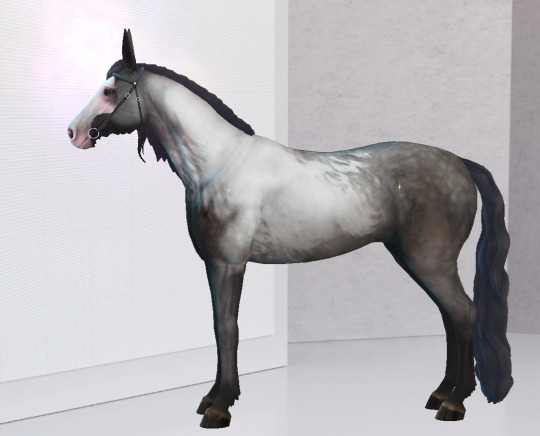

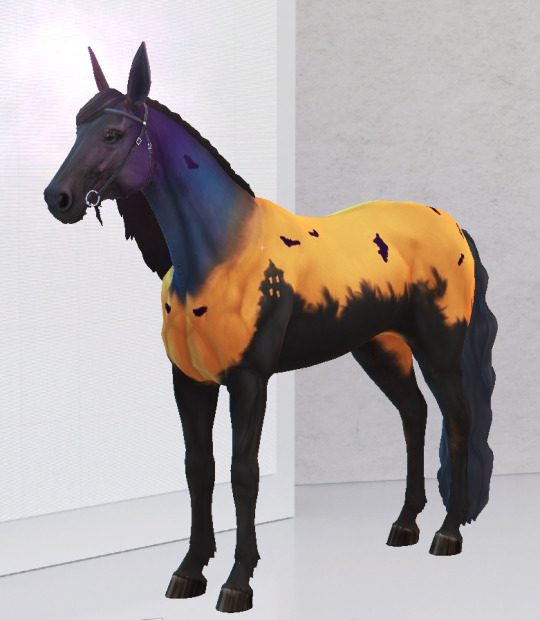
Up for Auction on Equestriad
Our first auction will be starting in 20 minutes (at 8am GMT BST) - and features
4 Equestriad Horses -
1 Equestriad Coldblood,
2 Equestriad Sports Horses
1 Equestriad Hotblood
This breed originates and was created by @HiddenShrineStables and is part of a project for Equestriad. Two of these horses come in limited edition Halloween only colours
We also have BEE Nightmare - a gorgeous Noriker mare going up for auction, being sold by Valentina! If you want to bid on any of these horses auctions run from Saturday 8am GMT to Monday 8am GMT so join the discord today at - https://discord.gg/FSWp5QKQ
#sims 4 horses#harpg#sims 4#horses for sale#sims 4 horse and rider#equestriad#The Sims 4#custom breed
8 notes
·
View notes